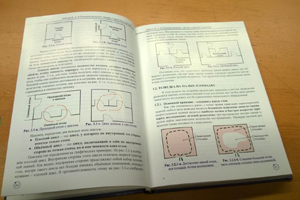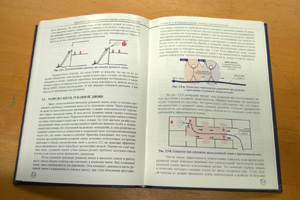Primary search tactics, strategy and culture: the book
Why a book?
About two years ago I was asked by my colleagues and friends from Moscow Fire Department, Russia, to write a manual on primary search. It was supposed to be about 20 pages long. I have to say that I have failed to deliver on this request miserably as the manuscript first went past requested 20 pages, then past 100 pages until it reached 350 pages of text and illustrations. Clearly this was no longer a manual, and that's how this book was born.
In 2016, the Kalan publishing house has published it in Russian Federation. This is the first book published in Russia that is completely dedicated to primary search. I am presently working on English edition of the same book. When published in the United States, it will be the second book in English that discusses solely the topic of primary search.
Who else is out there?
It would be unfair not to mention the first such book in English – it is a recently published "Searching smarter" by John "Skip" Coleman and it is a great read that I highly recommend. What is unique about Chief Coleman's book is that it discusses in-depth how to search in different types of layouts and occupancies found throughout the US. I feel that every firefighter involved in interior operations should know this stuff.
All in all, before Chief's Coleman's book got published three years ago, we had a pretty sad state of affairs as far as primary search literature is concerned. Your typical Firefighter I/II textbook contains around 1200 pages and only three of them, yes, three, are discussing how to search the burning buildings. If you invest in a typical truck company ops book, you will get about 10 pages. And this is for one of the most dangerous activities on the fireground! I found this unacceptable and wrote my book as a result.
What is unique about my book?
 My book approaches the problem of primary search from slightly different perspective compared to excellent read by Chief Coleman – it aims at arming you with the rules (called algorithms) that work in any layout, even the one that you are not familiar with upfront, and these rules continue to work in zero visibility. Let's face it: thanks to the large open spans made possible by the modern lightweight construction, we are more and more often stepping into the custom and complex layouts that are full of surprises. You might still have your colonials, raised ranches and cape-cods out there, but all commercial real estate and now new residential too comes with an arbitrary layout. In my book I present different set of algorithms for small area search, large area search, VEIS and searching along the deployed hoseline, all usable in arbitrary unknown layout and zero visibility. My goal is to arm you for the worst case scenario so that you survive all your searches.
My book approaches the problem of primary search from slightly different perspective compared to excellent read by Chief Coleman – it aims at arming you with the rules (called algorithms) that work in any layout, even the one that you are not familiar with upfront, and these rules continue to work in zero visibility. Let's face it: thanks to the large open spans made possible by the modern lightweight construction, we are more and more often stepping into the custom and complex layouts that are full of surprises. You might still have your colonials, raised ranches and cape-cods out there, but all commercial real estate and now new residential too comes with an arbitrary layout. In my book I present different set of algorithms for small area search, large area search, VEIS and searching along the deployed hoseline, all usable in arbitrary unknown layout and zero visibility. My goal is to arm you for the worst case scenario so that you survive all your searches.
These rules in the book are not my subjective preferences, I also present the objective proof why certain algorithms are better while others should never be used again because they are slower and less safe. This is what is truly unique about this book – nobody, to the best of my knowledge, has previously compared different search techniques mathematically and debunked a number of pervasive myths as a result. Yes, sorry, if you read this book, there is a chance that your favorite search method will be proven horribly ineffective. You have been warned!
Algorithms??? Math??? Somebody, kill me now!
I mentioned math, but worry not, if you don't like math, you won't need to understand any of it to conduct effective searches. The math in my book is only for a formal proof, you can skip it and go directly to the result, which is always a set of simple rules that anyone can follow even under the stress of difficult firefighting. I might be a scientist by training, but I am also an active fire officer and instructor, so I understand what works and what doesn't work in combat.
What else is in the book?
 The book discusses primary search on three different, but interconnected levels: tactics (what each team does inside and how), strategy (how IC utilizes multiple search teams) and culture (how firefighters perceive primary search and what tricks they use to increase both safety and efficiency of their searches).
The book discusses primary search on three different, but interconnected levels: tactics (what each team does inside and how), strategy (how IC utilizes multiple search teams) and culture (how firefighters perceive primary search and what tricks they use to increase both safety and efficiency of their searches).
The book also positions the primary search within other firefighting disciplines – fireground survival as a foundation and rapid intervention as the next step on the ladder of mastery. It has chapters on both, focusing on search-specific survival techniques that are rarely discussed in general firefighter survival literature as well as the information on how to conduct searches in RIT/FAST scenarios.
Why did I write it?
I wrote this book because primary search is my true passion and the reason why I stayed in firefighting. Primary search is the only topic I teach as a fire service instructor (with occasional excursions into fireground survival and rapid intervention when it is needed). I wrote this book to gather, arrange and share the knowledge and experience I have acquired and the techniques that I have developed while conducting and teaching primary search internationally.
While the English edition is not ready for print yet (I am working on it), you can both explore this web-site which has a "lite" version of the information contained in the book, as well as browse the table of contents here.
Click here to see the table of contents






